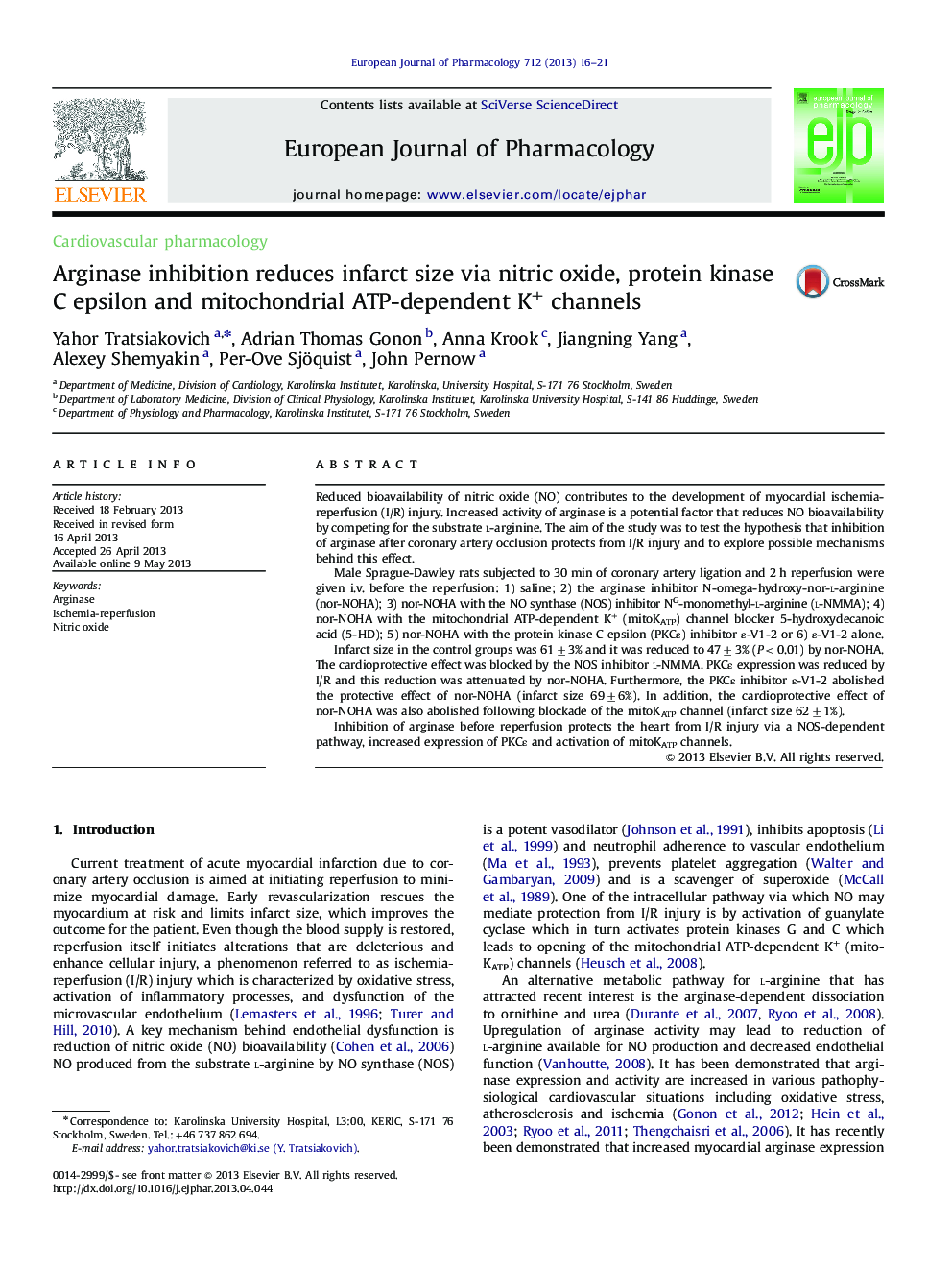| Article ID | Journal | Published Year | Pages | File Type |
|---|---|---|---|---|
| 2532129 | European Journal of Pharmacology | 2013 | 6 Pages |
Reduced bioavailability of nitric oxide (NO) contributes to the development of myocardial ischemia-reperfusion (I/R) injury. Increased activity of arginase is a potential factor that reduces NO bioavailability by competing for the substrate l-arginine. The aim of the study was to test the hypothesis that inhibition of arginase after coronary artery occlusion protects from I/R injury and to explore possible mechanisms behind this effect.Male Sprague-Dawley rats subjected to 30 min of coronary artery ligation and 2 h reperfusion were given i.v. before the reperfusion: 1) saline; 2) the arginase inhibitor N-omega-hydroxy-nor-l-arginine (nor-NOHA); 3) nor-NOHA with the NO synthase (NOS) inhibitor NG-monomethyl-l-arginine (l-NMMA); 4) nor-NOHA with the mitochondrial ATP-dependent K+ (mitoKATP) channel blocker 5-hydroxydecanoic acid (5-HD); 5) nor-NOHA with the protein kinase C epsilon (PKCε) inhibitor ε-V1-2 or 6) ε-V1-2 alone.Infarct size in the control groups was 61±3% and it was reduced to 47±3% (P<0.01) by nor-NOHA. The cardioprotective effect was blocked by the NOS inhibitor l-NMMA. PKCε expression was reduced by I/R and this reduction was attenuated by nor-NOHA. Furthermore, the PKCε inhibitor ε-V1-2 abolished the protective effect of nor-NOHA (infarct size 69±6%). In addition, the cardioprotective effect of nor-NOHA was also abolished following blockade of the mitoKATP channel (infarct size 62±1%).Inhibition of arginase before reperfusion protects the heart from I/R injury via a NOS-dependent pathway, increased expression of PKCε and activation of mitoKATP channels.
